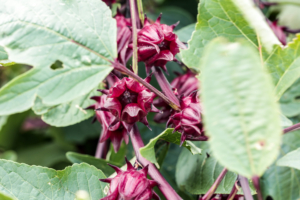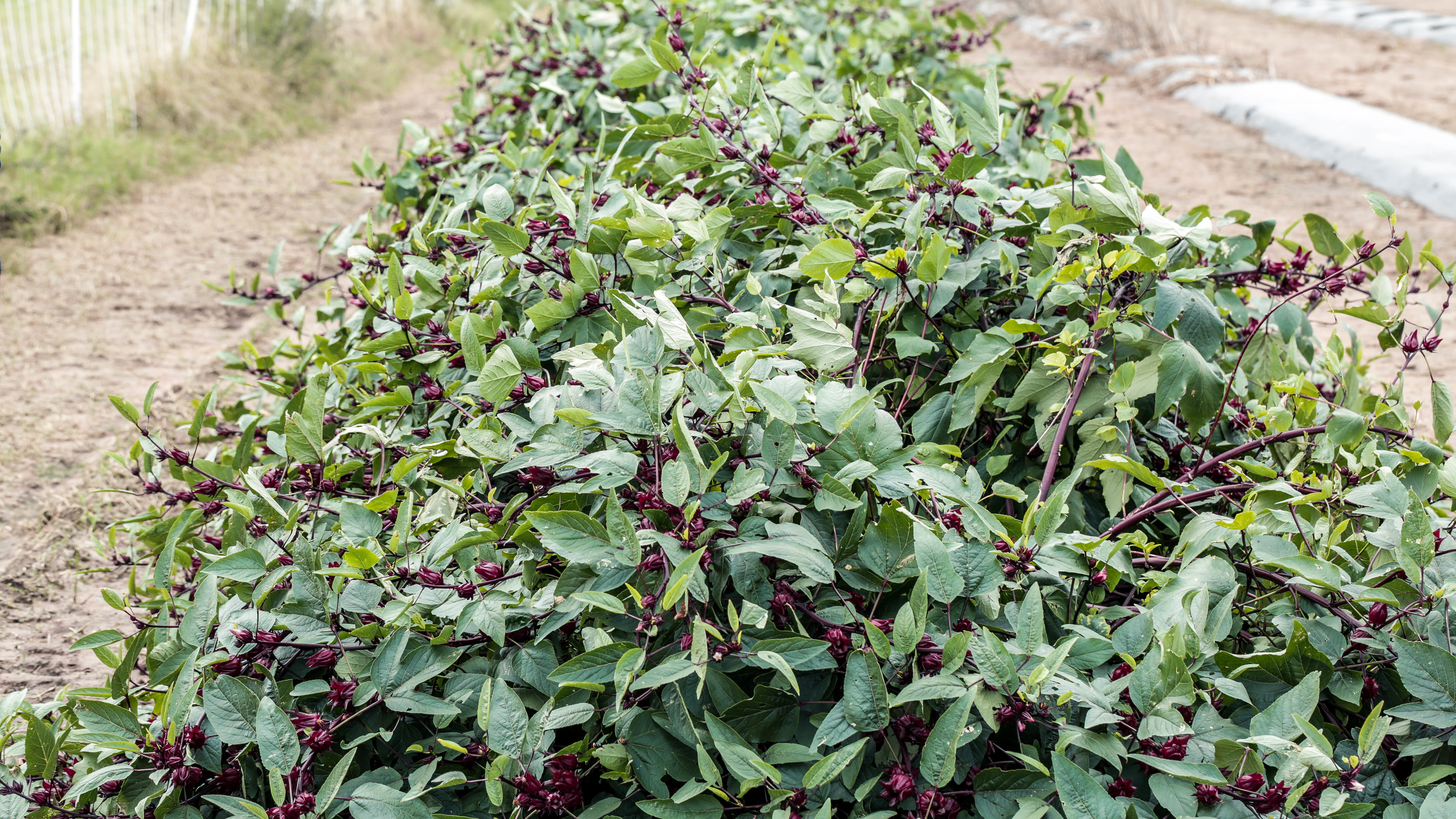November 12 – On the continent of Africa, a plant with a white to pale yellow colored flower admired for its beauty is also revered for its medicinal powers. Known as sorrel

in Jamaica, the fruits of this plant is widely consumed in the form of teas and festive holiday drinks. In Belize, Central America it is also used in spirits and for a variety of medicinal purposes.
Sorrel, known scientifically as Hibiscus sabdariffa, is a member of the Malvaceae family. The genus Hibiscus has more than 300 species including, but not limited to okra and cotton, and we are just beginning to unlock some of the endless possibilities this plant holds. Ongoing research indicates sorrel’s medicinal values include reducing high cholesterol, and high blood pressure, improving liver function, and sorrel boils can serve as a tonic to reduce body weakness. As if that’s not enough, it can serve as a laxative and if taken daily, can aid in weight loss.
With reddish stems, dark green leaves and white to pale yellow flowers, sorrel is aesthetically unique and has multiple uses. The plant produces seedpods enclosed in a red calyx which is widely used to make food products such as jams, jellies and spices. Here at Prairie View A&M University, Researcher Dr. Peter Ampim and Ag and Natural Resources Extension Specialist Dr. Kesha Henry, through their collaboration, are discovering that our Texas climate and soil are ideal for growing this crop. According to Dr. Peter Ampim, “Sorrel is a crop that doesn’t require a lot of management, and would be ideal for Texas farmers.”
The plant needs a four to eight-month growing period, with five to ten inches of rainfall per month for the first few months of growth to avoid premature flowering. Here in Texas, the months of May or June are ideal for planting, which means the plant will bloom from September through October with harvest expected between November and December. One sorrel plant can produce about three pounds of fruit.

Dr. Ampim
According to Dr. Ampim, recommending this crop to local farmers must include providing them with production techniques and tools to manage insects, which can be a costly threat to most crops. Though this low-maintenance plant does not appear to attract insects that feed on it, it is important to test and identify potentially suitable insecticides for controlling insects in sorrel production. This will help develop ready to go tools to recommend to farmers should they begin to grow sorrel in large quantities. To this end, a replicated experiment being managed by Dr. Eric Obeng, Postdoctoral Researcher with Dr. Ampim, is on-going on the Prairie View A&M University Research Farm to test OMRI certified organic insecticides on sorrel. The results of this experiment will help determine some potential products to consider for managing insects in sorrel production in our region.
Here in the United States, we are just unveiling some of the potentials this plant holds. Dr. Ampim said, “In Ghana, they eat the leaves fresh or dried and drying is done to increase the shelf life of the leaves.” Dr. Henry added, “The plant can also be used for cosmetics including soaps and lotions.” While no one can say for sure exactly where this tropical plant originated, everyone agrees that Sorrel’s potential healing powers can be beneficial to people all over the world. Soon through this collaboration, Texans too will be exposed to some of this beautiful plant’s medicinal possibilities.
Dr. Kesha can be contacted by phone at (936) 261-5030 or email at kahenry@pvamu.edu.
Photo credits by Crystal Talley Thompson
Tucker Wilson
Media and Publications Manager
tuwilson@pvamu.edu
(936) 261-5116



